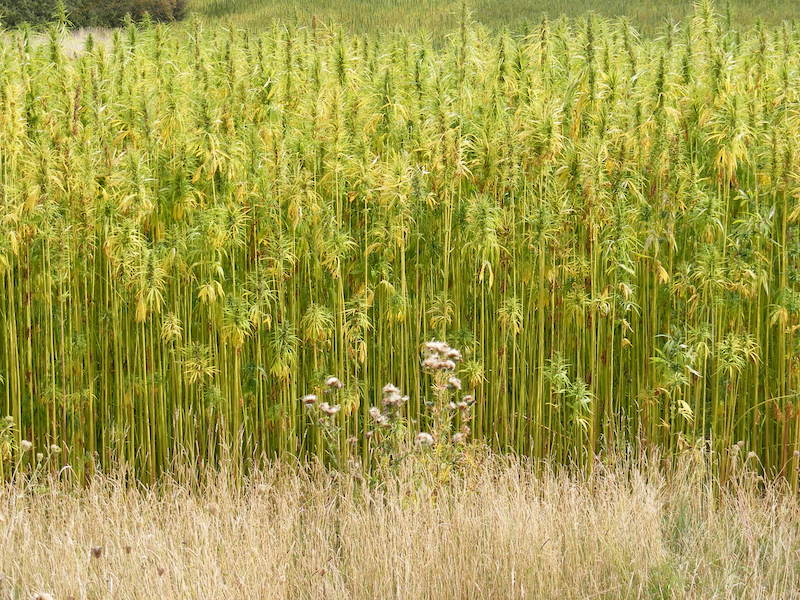Trying to Perfect the Industrial Hemp Farming Act of 2017


By Hoban Law Group’s Hemp Practice Group co-chairs Matthew Smith, David Bush, and Patrick Goggin, assisted by counsel Garrett Graff
What We Have Learned: The better the clarity of better-detailed definitions, the more that farmers and investors will become comfortable in developing what has the potential for an immensely prosperous and expansive industry.
October 7, 2017: In the past five days, at least four more congressional legislators have signed on to cosponsor H.R. 3530, the Industrial Hemp Farming Act of 2017 (IHFA).
The bill was introduced in late July by U.S. Representatives James Comer (R-Ky.), Bob Goodlatte (R-Va.), Jared Polis (D-Colo.), and Thomas Massie (R-Ky.) with 15 original cosponsors. That support has nearly doubled as the first week of October saw Representatives Scott Tipton (R-Colo.), Mark Pocan (D-Wis.), Gwen Moore (D-Wis.), and Mike Gallagher (R-Wis.) respectively join in.
IHFA is the latest in a 10-year effort by Congress to further protect industrial hemp from treatment as “marihuana” pursuant to the federal Controlled Substances Act, and to restore hemp as a thriving legal crop in the United States.
Industrial hemp currently enjoys allowances for cultivation within certain parameters pursuant to the Agricultural Act of 2014, which then defers to individual states to enact corresponding legislation. Several states have already passed such legislation, allowing for the growing of industrial hemp under diverse and often conflicting state specific criteria. The inconsistency between federal and state laws governing industrial hemp has created much confusion between farmers and investors alike as to what they can and cannot do while re-establishing the emerging industry.
While IHFA would achieve a great step toward further protecting nationwide hemp production, many in the industry have voiced concerns if it were passed in its current form, specifically:
- Section 5(1), refers to the Food, Drug, and Cosmetic Act and “non-approved, adulterated and misbranded products.” Inclusion of this language could provide an unclear argument whether Congress intended to draw a correlation between industrial hemp and “non-approved, adulterated and misbranded” products.
- The definition of “industrial hemp,” which includes “part and derivative,” but omits the term “extract.” A strong argument could be made that an extract is a derivative, why leave that definition to chance?
- Section 4 includes rules for administrative inspections. The language is overly broad in that it allows for inspection by the DEA in “places that industrial hemp or research hemp is ‘produced, stored, distributed or used.’” Allowing the DEA to interfere in such a broad manner with what should be regulated – presumably by the USDA, not DEA – as just another agricultural crop and commodity is troubling, to say the least.
- Section 3(2)(a) defines industrial hemp by two alternative maximum threshold concentrations of tetraydrocannabinol (THC), the psychoactive ingredient found in much higher levels in marijuana. Cannabis plants with a concentration of 0.3% or less by dry weight may be cultivated and processed without restriction. Plants with more than 0.3% but no greater than 0.6% are still considered industrial hemp, but may only be used for research, not commercial trade. Left unsaid in IHFA is whether such threshold concentrations apply to plants only, or also to products made from them, such as essential oils, foods, and dietary supplements. As processing tends to concentrate the constituent compounds naturally occurring in cannabis plants, clarity about precisely what is being regulated – plants, or products, or both – is a critical consideration.
While not perfect, IHFA works to allow industrial hemp to join the mainstream of the American economy without suffering undue and burdensome regulation. Most of the issues listed above can be fixed with clearly defining certain terms, or at the very least providing less ambiguity with the goal of avoiding undue litigation in the future. The more that ambiguity is clarified through better-detailed definitions, the more that farmers and investors will become comfortable with helping to develop what has the potential for an immensely prosperous and expansive industry.


